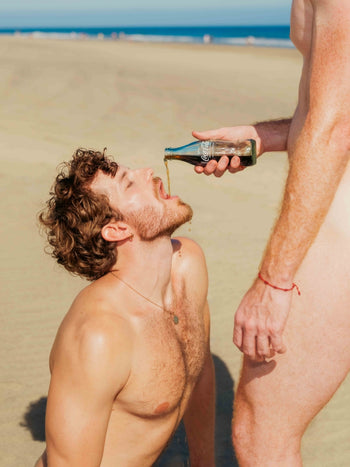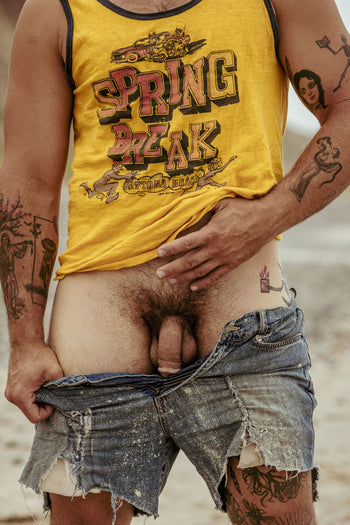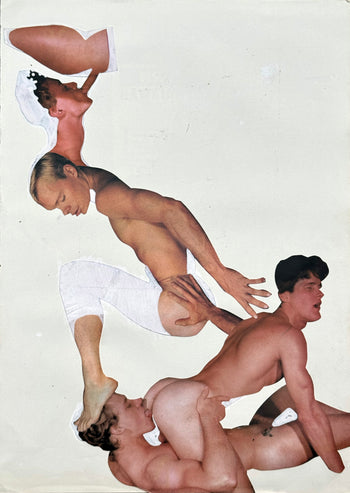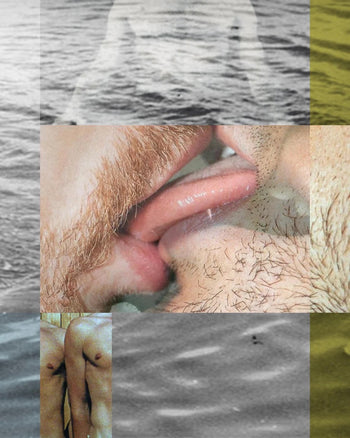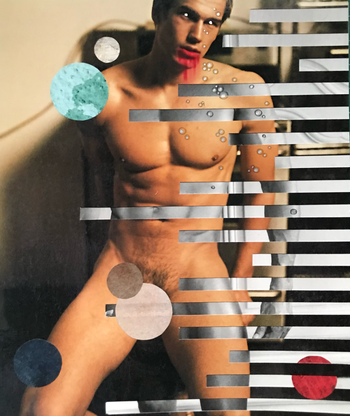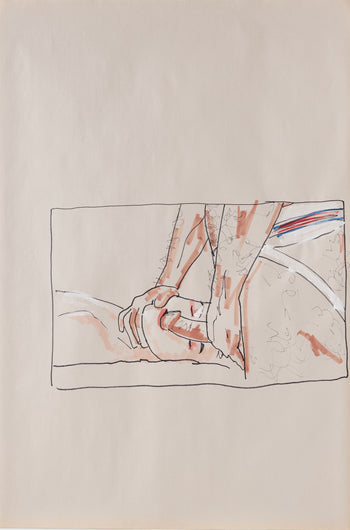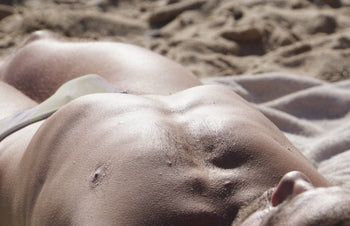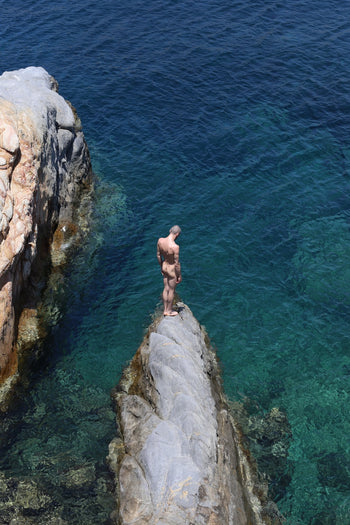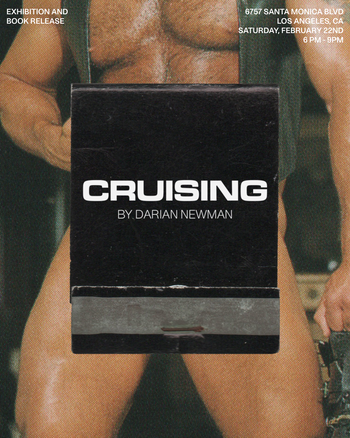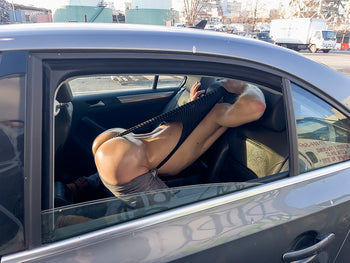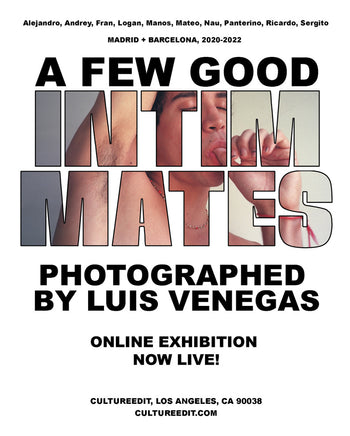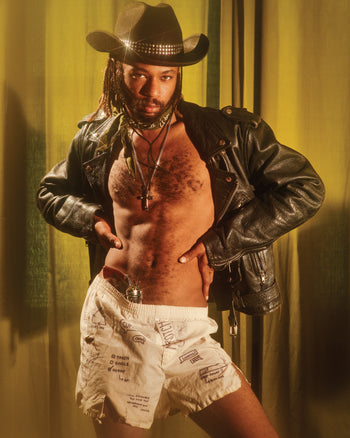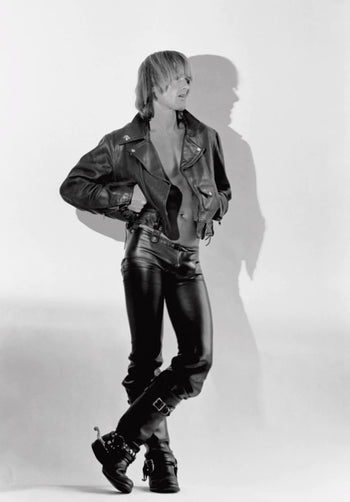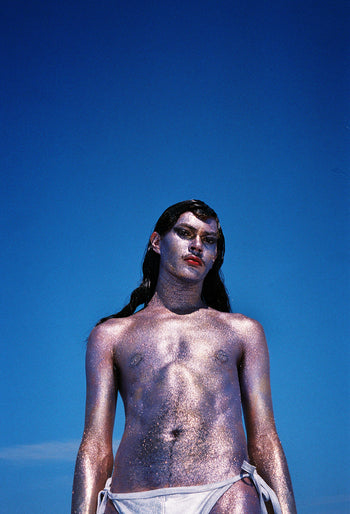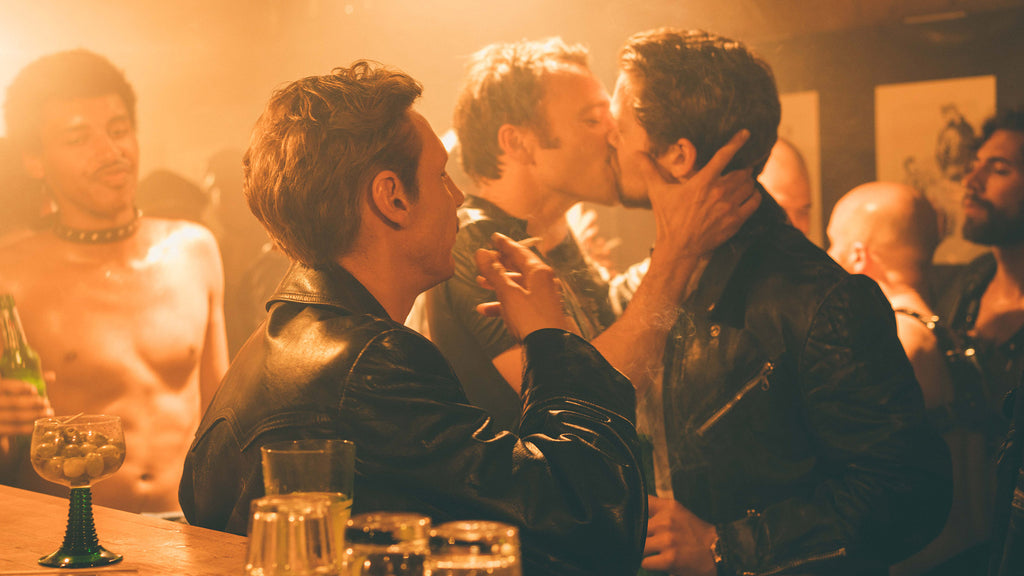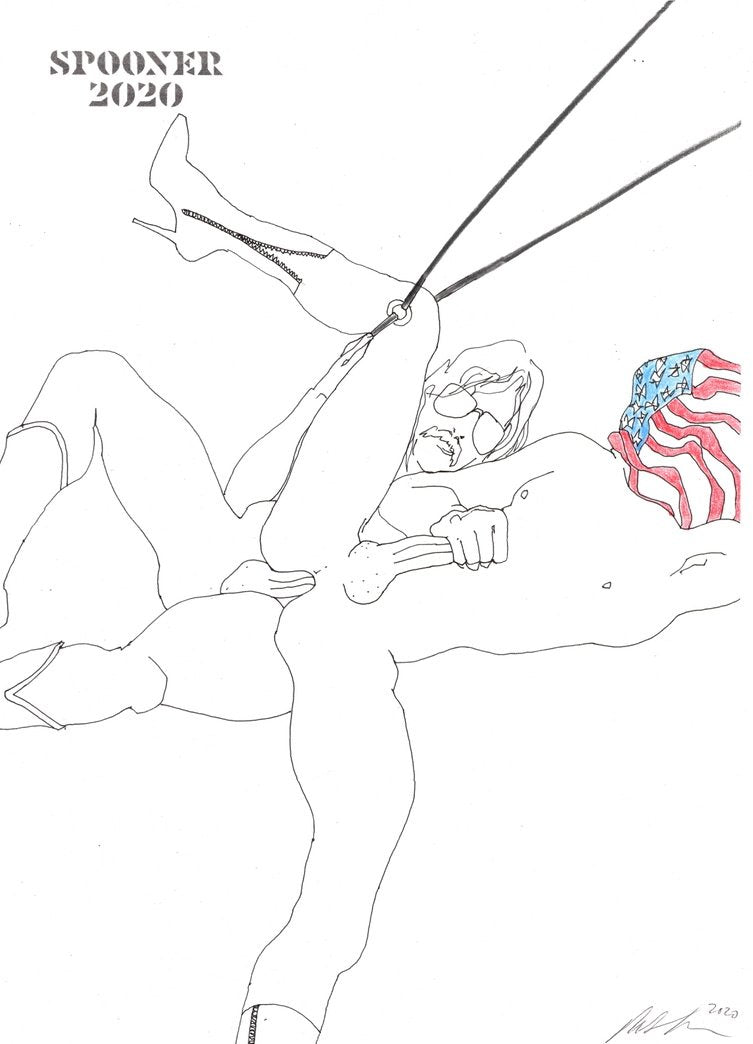Growing up in Finland, were you familiar with Tom’s work? Can you tell me about how you first came across it and what it meant to you?
I have always been a fan of his work. I came across it at quite a young age, which left an impression on me. I think I was around 12 when I saw his images, when it was revealed in Finland that Tom of Finland was actually a Finnish man, Touko Laaksonen. Tom being Finnish came as a total surprise to me. It was not a publicly known fact. Over time his work started to stand out to me, and I started to keep an eye on it. I grew to understand the artistic value of his images more in film school.
As I worked on the film and met people who Tom’s art touched, I started to realize what his work embodies, what it means to draw horny and proud gay men having sex in broad daylight. Considering the era, it had to take a lot of character and courage. I see an icon of courage: A gay James Bond who can still give courage to those who discover his work.
What does Tom mean to the Finnish people?
In Finland, Tom’s work has always been somewhat controversial, that has been so for every generation that discovers his work. The conservatives have had a ball dancing on Tom’s grave by bad mouthing him, but over time I think pride from his art has transferred to the general consciousness of the Finnish people. We are now proud of Tom of Finland. Having his art on the official Finnish postal stamp may be the greatest honor.

As a heterosexual, what drew you to Tom of Finland’s art?
The pride. The lust. The boldness.
Any time you look at his art, you feel it. It explodes.
Did you find it overly sexual? What about it spoke to you?
You can find works of his that might seem in an instant, overtly sexual, but when you look closer, they are made in a playful way. All of his work speaks in a universal way. I can never fully understand it as a heterosexual, but in spending time with his art and the friends who are helping his legacy spread, I’ve grown to it so strongly. It’s punctured my heart.
What made you interested in telling Tom’s story?
As a storyteller, for me the big surprise was the story behind the man. I was struck by what Tom had to do and encounter to get his art out there. For me it blossomed as a story about freedom of speech. Freedomof being. It was a story that was worth the big screen and I felt privileged being the one to tell it.

The film focuses a lot on Tom’s life before he came to TOM House: about his time in the army, at the advertising agency— the moments that inspired his life’s work. Can you tell me how you decided to focus on these parts of Tom’s life?
Touko found his voice as an artist in post war Finland, a time when it was illegal to be gay, and was considered a sickness. It makes him an exceptional artist because he ridiculed the authorities in his work, the same ones that oppressed sexual minorities. We felt, with the writer Aleksi Bardy, that was an essential time in his life, where he grew as a man and as an artist. War was a big inspiration for his work. Tom felt war both in a positive and tragic way— he had an amazing sex life during that time, but simultaneously confronted death. The linear timeline from the ‘50s to the ‘80s was chosen for its great storyline. Tom came to America, a country he’d affected without knowing it. He arrived as hero with a past on his shoulders.
That’s a great inspiration. Where did he come from? The artist who is not famous yet, not enjoying that he is acknowledged, is much more interesting to follow, it makes him more relatable. We wanted to introduce the audience to a man made of flesh, who had his battles, someone whose journey we could follow and feel for. And it gives weight to his art.
Do you feel like anything is left out of the movie?
The sad part is that when you try to focus on a certain storyline of the artist, you have to leave so many great stories out. I believe his London years would have made a film on its own, but I have no regrets of the left-outs. We aimed to do a film that was emotional and sincere. A film that brings you close to Tom’s feelings. Sometimes I think should we could have added a couple more sex scenes, but many of them were cut out of the script, as they didn’t really help the dramatics of the story. They were more thematic than dramatic.

What other challenges did you face?
One scene I couldn’t afford budget-wise was the arrival to America. It actually happened at JFK. There was a dented limo waiting with a couple choppers, and bikers in their gear. We had to cut that out because of budget reasons. There were other scenes not shot because of budget issues, but that’s the only scene I still dream of having in the film. It’s like an alternative dimension for me. Bustling JFK, motorcycle cops, uniforms, leather jackets, a steaming limo, and Tom… It didn’t make the film, but Tom got to experience it, and that makes me happy.
What was it like coming to Los Angeles and seeing the actual house that Tom lived in?
Coming to Tom’s house in Los Angeles was an incredible experience. Tom idolized the hyper masculine man. He wanted to create that utopia again and again. He then saw his utopia, his fantasy come true when he arrived in the United States. A muscular world of the kind he had created. He found in L.A. the proud gay world, which was part of his art and portrayal of men. In a way it felt like seeing a glimpse of the world through his eyes. There is definitely a different feel to the California sun.
I learned over the five years preparing for this film how many people Tom influenced, and TOM House is like a harbor to all these people. A kinky place to feel free to create. It’s an adventureland. I did not have the chance to visit all the places he visited, but Durk made sure I had a chance to meet a lot of the people who knew him— his friends, collaborators, fans— that was essential, but also wonderful. Everyone loved Tom and had a different story to tell.
We couldn’t shoot in the real TOM House because of numerous production reasons. So we found a house and yard in Madrid that is a bit of an exaggerated version than the real house. I always thought that since Tom made his dicks a bit bigger, we had to make the house a bit bigger!! It was great finding guys from the gay community in Madrid and Berlin who played as TOM’s Men. They were so inspiring on set and we had great fun even though the gear must’ve been hot! I encourage people to visit TOM House when they visit L.A.

What is the story you were interested in telling as a filmmaker?
We started research in 2011 with the writer Aleksi Bardy, and quickly learned Tom’s personal story was really cinematic. There was a lot to it. Doing a biopic is kind of a world of its own. First you dive into what was real, and once you have learned it by heart, you are ready to distance yourself from it again. By that point you have taken the most cinematic things into account and realized you also have to balance them with what brings the story forward. While realizing that, many versions emerged. Eventually, everything started to fall in place. For me, when the story falls in place, then the visual language starts to speak from the text.
The visual language of the film is stunning! Can you talk about your artistic approach?
From early on I had the idea that the film shouldn’t look to Finnish, as Tom’s work doesn’t look Finnish. It has an international feel to it. I wanted to build a team that consisted of international departments heads.
Who are the principal team members?
Producers: Miia Haavisto, Annika Sucksdorff and Aleksi Bardy
Writer: Aleksi Bardy
Cinematographer: Lasse Frank
Editor: Harri Ylönen
Production Designer: Christian Olander
Costume Designer: Anna Vilppunen
Main Composer: Hildur Gudnadottir
Composer: Lasse Enersen
Main Cast:
Pekka Strang –Tom
Lauri Tilkanen –Veli, Tom’s partner
Jessica Grabowsky –Kaija, Tom’s sister
Taisto Oksanen – Tom’s commanding officer Alijoki
Seumas Sargent –Doug (Fictionalized version of Durk Dehner)
Jacob Ofterbro – Jack (Fictionalized version of different men Tom met in the US)

Back to the visual language question…
When you plan a film for five years, every scene has some kind of a visual idea behind them. Some are made very poignant, some are more subtle. Some can be just made for fun.
We decided to make the film with a motive of coming from darkness to light. That idea came from Tom’s way of drawing guys in the nighttime (frolicing in broad daylight), when he was working at the ad agency by day. From that idea, we built the visuals with our Danish cinematographer Lasse Frank, who’s nominated for a Jussi, the highest film award in Finland.
What Tom saw in the U.S. was equivalent to paradise for him, coming from a strictly conservative society in Finland. His life gave cued us how to film thematically. The widest shots and most vibrant colors are left to where they belong in Tom’s story— ‘70s America. In Finland, being gay was criminalized. That gave us the key to develop the story from dark to light, from more confined feelings, into openness and freedom. With our Swedish Production Designer, Christian Olander (also nominated for a Jussi),, we had the idea of introducing colors one by one. So the color red came in Berlin and so on.
There are compositions that are inspired by Tom’s drawings. Of course it’s tricky to make them look exactly like the ones he made, but it was nice to pay homage to such a great artist.
How did you cast Tom?
We had a very intensive audition period for two months, where I always had two men as pairs in the room: One playing Tom and one playing Veli. I did some scenes from the script, but also some improvisations. I actually did them in both languages: Finnish and English. When Pekka Strang and Lauri Tilkanen did their turn together, I could feel that they were my Tom and Veli. The electricity between them was magnetic to watch.
What is your take away from doing the project?
I learned a lot as a filmmaker, and especially how to shoot films in several countries. We shot the film in five countries and the production side itself became important in directing. I feel very proud and happy about the film and what our team achieved. I feel that we were able to continue the legacy of this wonderful artist which was one the main reasons for doing this film. I hope that it helps young people who have closeted themselves because of their fears or the prejudice of their surroundings to come out in a proud way. To be a TOM’s Man!
Any last words about Tom, filmmaking, and/or life?
I learned so many things from Tom. Especially about not having shame.
About joy. How to live a life with joy and fun, and to not have shame about our fantasies.

Jamison Karon is the author of How to Be a Faggot, and creator of the series and short film Sorry You're Sad. He is a screenwriting fellow at the American Film Institute.

